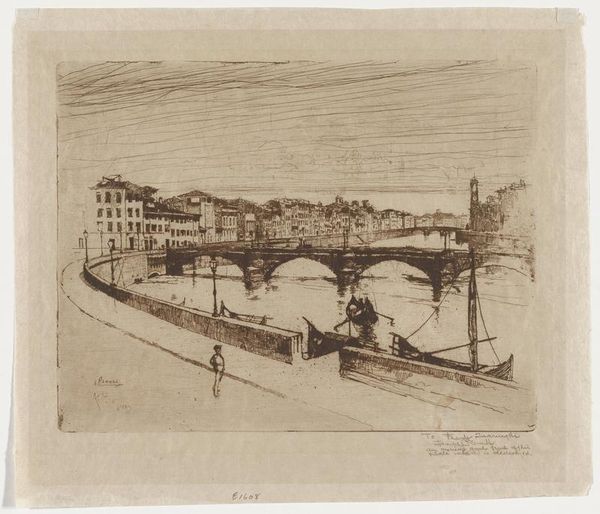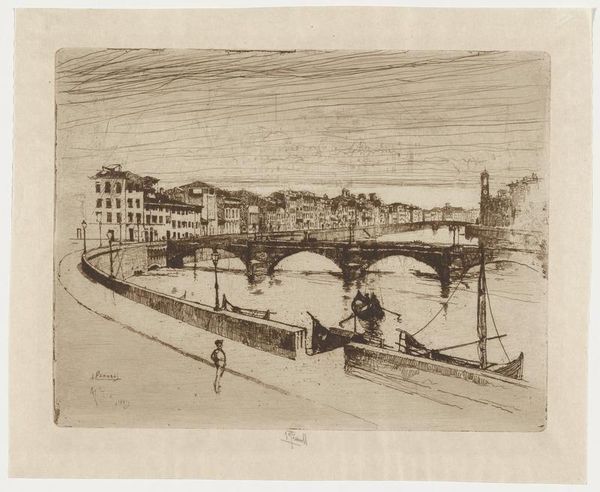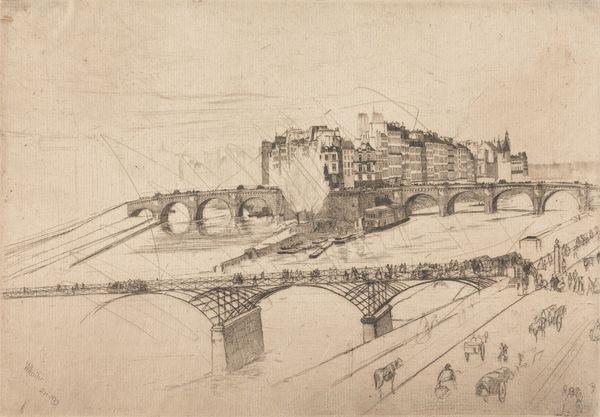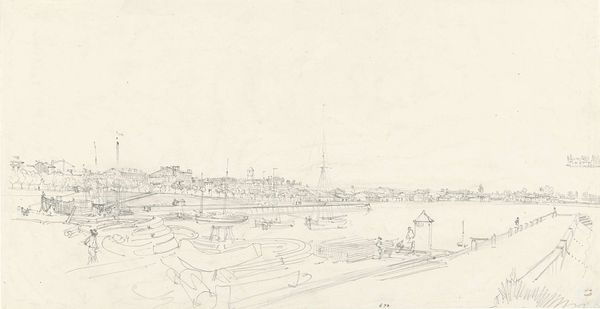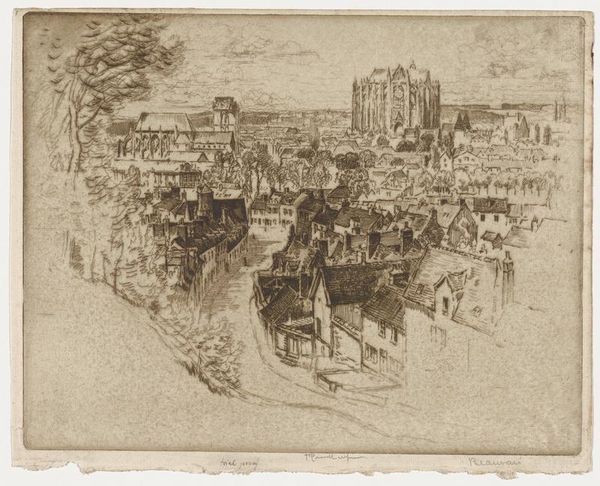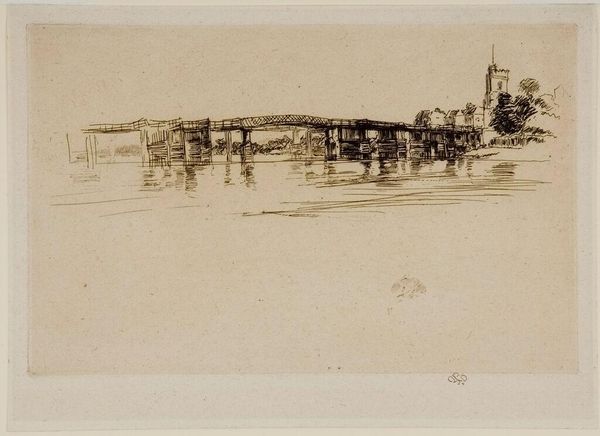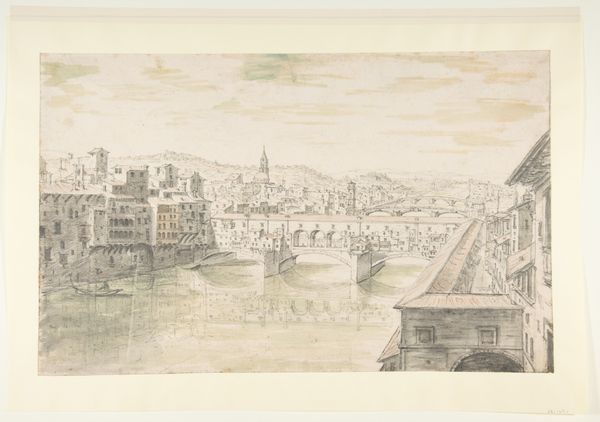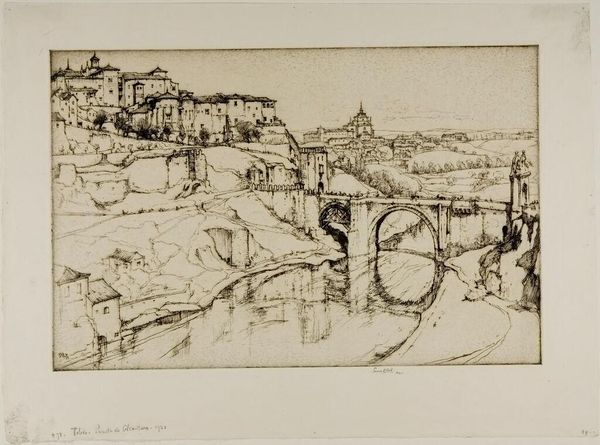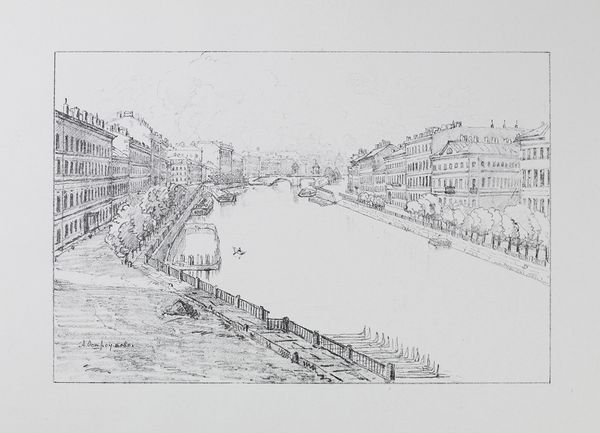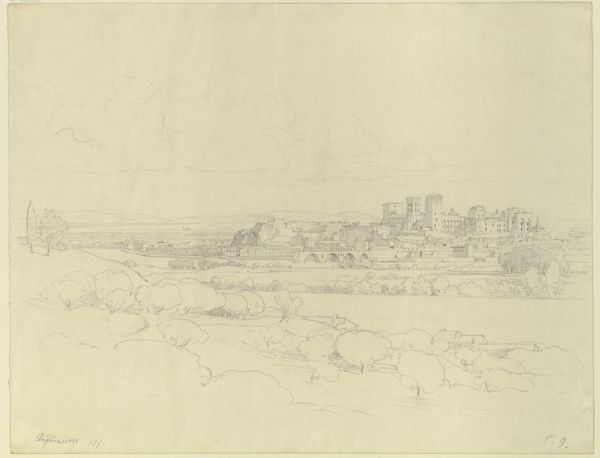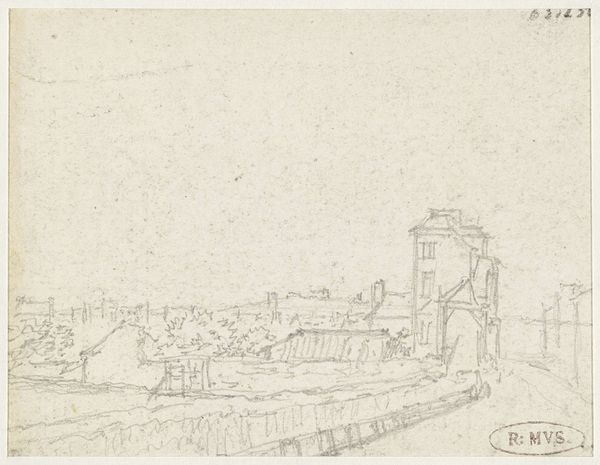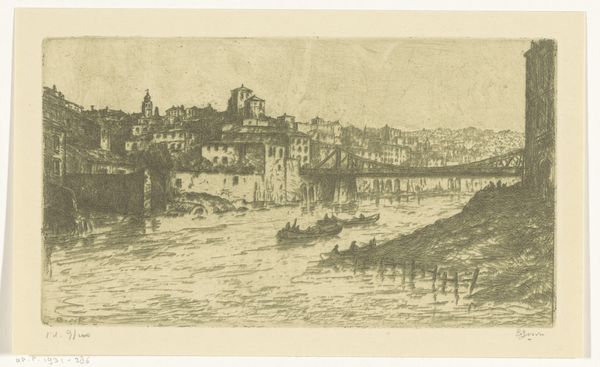
drawing, print, etching, paper, ink
#
drawing
# print
#
etching
#
landscape
#
etching
#
paper
#
ink
#
geometric
#
cityscape
#
modernism
Dimensions: 216 × 505 mm (image); 271 × 549 mm (plate); 330 × 610 mm (sheet)
Copyright: Public Domain
Editor: So, we're looking at Auguste-Louis Lepère's "Angers: Panoramic View," an etching from 1912, currently held at The Art Institute of Chicago. It's really striking how much detail he manages to capture in such a seemingly simple cityscape. What draws your eye to this particular print? Curator: Well, seeing this through a historical lens, what stands out to me is the deliberate rendering of a city undergoing modernization. Notice the geometric precision in the architectural details juxtaposed against the looser rendering of natural elements. It subtly reflects the socio-political tensions of the time – a yearning for progress clashing with nostalgia for the pre-industrial past. Does that resonate with you at all? Editor: I see what you mean about the geometric precision! The bridge, especially, seems very deliberately constructed, while the trees have a kind of...fuzziness. It’s interesting that this tension would be deliberate and linked to contemporary social issues, instead of a feature of the artist’s unique aesthetic. So how do you interpret the prominent placement of the bridge itself? Curator: Precisely. Bridges, especially during the late 19th and early 20th centuries, became potent symbols of connection, commerce, and above all, progress. Lepère isn’t just capturing Angers, he's participating in a visual dialogue about the very nature of modernity. We can’t ignore that artists aren't just passive observers; they’re actively shaping and reflecting public discourse. I think its scale—or size in the composition—reinforces it, don’t you? Editor: That's a compelling point about the bridge and visual dialogue of modernity. It pushes me to consider cityscapes not just as pretty pictures, but also as reflections of societal values and evolving identities. Curator: Absolutely, and it's a perfect reminder that art always exists within a complex web of social, political, and institutional forces. Considering this as an institution reinforces our perspective about its meaning and purpose, as well as those forces that define its understanding in later periods of study. Editor: This perspective gives the image even greater meaning! Thanks for pointing all of this out!
Comments
No comments
Be the first to comment and join the conversation on the ultimate creative platform.
